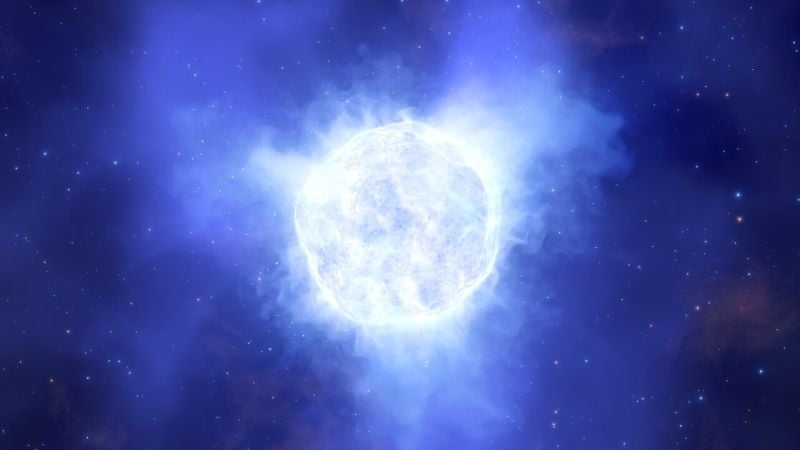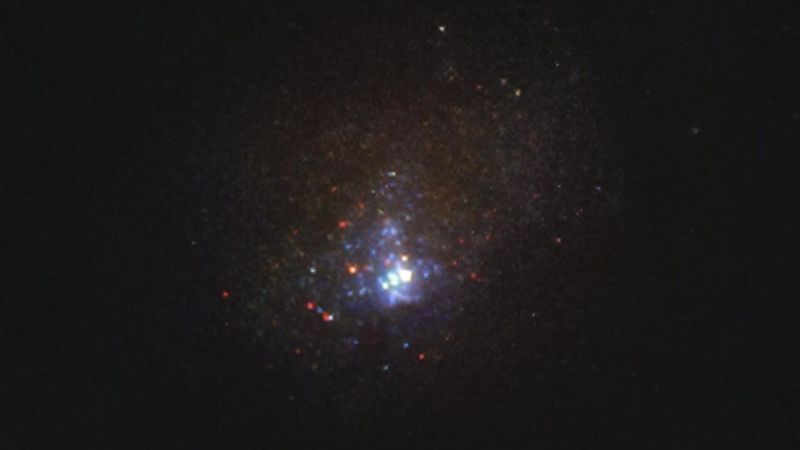An unusually bright star has gone missing…
In a mystery of cosmic proportions.

An object inside the Kinman dwarf galaxy has disappeared from view, according to new research published today in Monthly Notices of the Royal Astronomical Society.
This massive and exceptionally bright blue star was hypothesized to exist based on astronomical observations made between 2001 and 2011, but as of 2019, it is no longer detectable.
The authors of the study, led by PhD student Andrew Allan of Trinity College Dublin, have conjured two possible explanations:
- The star has experienced a dramatic drop in luminosity and is now partially hiding behind some dust…
- The star transformed into a black hole without sparking a supernova explosion.
If it’s the latter, it would represent just the second known failed supernova.
Luminous blue variable
The Kinman dwarf galaxy is located 75 million light-years from Earth, so it’s not close by any means. Astronomers cannot discern individual stars owing to the tremendous distances involved, but the hypothesized star in question is a luminous blue variable (LBV), which is detectable at extreme distances.
LBVs are massive and unpredictable stars at the end of their lives. The variable nature of this star, through its dramatic shifts in spectra and brightness, can be spotted from Earth.
Incredibly, this suspected star is 2.5 million times brighter than our Sun. Or at least it was.
Observations gathered from 2001 to 2011 pointed to a late-stage LBV in the Kinman dwarf galaxy.
In 2019, a team of astronomers wanted to take another look to see how it was doing, and they did so using the European Southern Observatory’s Very Large Telescope. To their surprise, there was nothing to see — a result that was both exciting and discouraging at the same time.
New space mystery
The researchers then checked these first observations with other telescopes and were unable to detect the star’s signature.
With nothing new to see, and with a mystery that suddenly needed to be solved, the team dove into the archives, looking at previous observations of the dwarf galaxy.
As it turns out, the suspected massive star experienced a strong outburst period that came to end around 2011. LBVs are known to throw the odd temper tantrum, resulting in a sudden loss of mass and a sharp increase in brightness.
Maybe is the star just now too dim for us to detect from Earth. Or the star collapsed into a massive black hole without an accompanying supernova explosion — a failed supernova.

This happens when a massive black hole is formed, and it is not spinning very fast. However a collapse to a black hole without producing a supernova has only been observed once in the past, in the galaxy of NGC 6946 where a smaller massive star seemed to disappear without a bright supernova explosion.
If a supernova-less transition into a black hole is the case, it would mark the first known example of this happening to a massive star in a low metallicity galaxy and these findings could hold important clues as to how stars could collapse to a black hole without producing a bright supernova.
As a relevant aside, the new paper is not to be confused with a similar paper from last year:
Instead of tracking the disappearance of LBVs, Villarroel and her colleagues tracked a phenomenon known as red transients, in which dim red dots get brighter and then recede from view.
More space mystery on Strange Sounds and Steve Quayle. Now if you are looking for supplements to increase your healthy lifestyle and sexlife please visit Natural Health Source. Thank you for your support! [ESO, Gizmodo]











